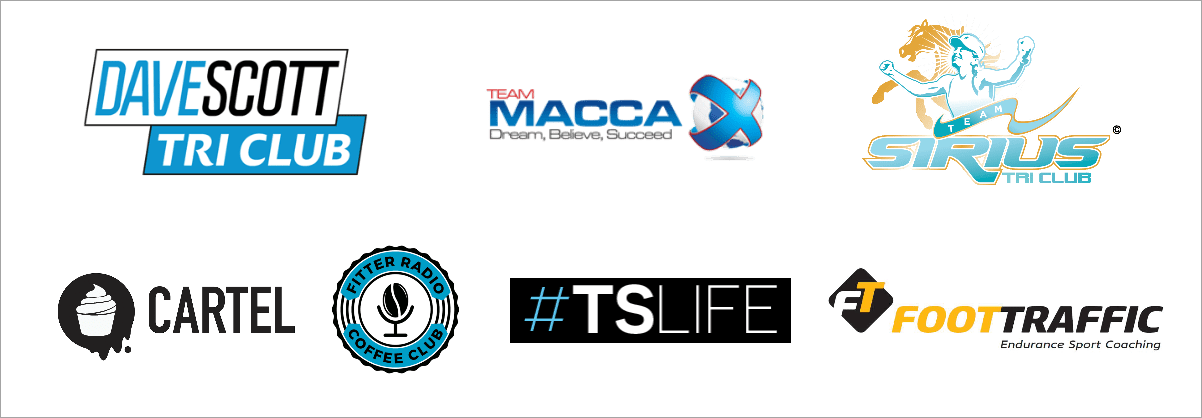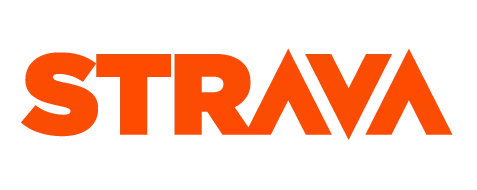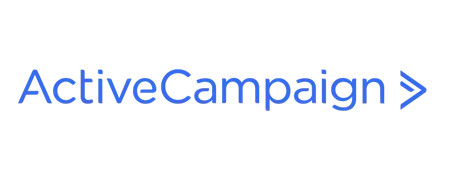Over the last half-dozen years triathlon and endurance coaches have been taking advantage of digital technology and offering online access to their services or products as part of a "club" a "members portal" or "online community".
Example brands using the membership model. Note: These are examples of brands and not examples of Training Tilt customers. Although a few of these examples use the Training Tilt platform most do not and the purpose for including them is to provide high profile examples of the membership business model in action. The mistakes mentioned in this blog are NOT taken from these brands.
Just to name a few, Dave Scott just launched his tri club, Macca's "MaccaX" community launched 5-6 years ago, Craig Alexander's "Sansego" has been going strong for 3 or so years and Bek Keat and Siri Lindley launched the inspirational "Team Sirus Tri Club" last year. Newcomers Callum Millward and Alise Selsmark launched the fun-filled "Cupcake Cartel" after years of keeping us entertained with "Cupcakes with Cal". Auckland based Fitter's "Fitter Radio" podcast and their new "Fitter Radio Coffee Club".
Also, special mention to TriSpecific's Kristian Manietta and "TSLife" which in part along with Rob Dallimore and the FootTraffic "TrainingLab" inspired me to create Training Tilt.
Why offer memberships as well as one-on-one coaching?
The big advantage of adding an online-only membership to your revenue model is that it allows you access to a much larger audience of potential customers who either don't want, need or can't afford higher cost services.
These are customers coaches normally can't derive any revenue from but with an online membership can grow overall revenue with a more "passive" revenue stream. I used parenthesis because one of the mistakes I'll touch on later is assuming that once an online customer signs up you don't need to do any work.
Typically coaching businesses would build their own system using a combination of website plugins, generic membership sites, payment providers all hacked together.
I built Training Tilt to make this business model easier and less complicated to execute with our all-in-one endurance coaching and membership platform. Training Tilt offers specific tools to build an online membership site that generates extra revenue from memberships but also creates a pool of potential new customers to sell higher value one-on-one coaching to.
In triathlon and endurance sport the overall customer base tends to slide in and out of premium one-on-one services (coaching). When they first get into the sport they might want a full-time coach, but after a couple of years want to try it on their own or with the help of a template training plan. Alternatively, some personalities want to have a go on their own first and then will look at one-on-one coaching once they reach a plateau or gain the confidence to go to the next level.
Offering lower value tiers of services allows a coaching business to widen their net and generate more revenue in the short term but perhaps, more importantly, but often overlooked, expand their pool of customers for their premium services.
Training Tilt coaches regularly give me feedback of being able to shift one-on-one coached athletes down to their online memberships instead of losing them completely when they want a break from one-on-one coaching. They also report large numbers of online-only athletes queueing up for premium one-on-one services after being a member for a while. When a spot becomes available in your one-on-one coaching it's much easier to simply pluck the next athlete off the waiting list and upgrade them than it is to nurture and sell to a brand new customer.
Mistake 1: Doing too much for the initial launch
This is the most common mistake. A coach has an idea of what they want to offer as part of an online membership and spend months building the platform and the content all leading up to a big "launch" before ever gathering any real feedback from real customers. Then on launch day, no-one signs up. After the launch is when the real work actually starts.
It's the same with any product or service. When you see a "big launch" actually work, the real story behind it is that it isn't the big launch at all. It's actually launching the 3rd or 4th version. The business has done a series of soft launches with much smaller, simpler versions to a subset of customers. They then take feedback and make changes. They add what they need to and remove what's not working. By the time the general public sees the big launch, they've fine-tuned their offering to only what works and nothing that doesn't.
The key to a successful online membership model is to start small, with one or two key benefits, test it with real customers (and real money) and then iterate. The trick is to find a balance of the minimum viable product (MVP) that is fast to build but provides enough value for someone to be willing to pay for it.
Side note: The only way to know for sure whether someone will pay for a service is to actually ask them to pay. You should never ask anyone if they "would" pay for it. People like to please so they'll say yes when they actually mean no. The true test of a product is when you ask a customer to enter their payment details. The faster you can get to that point the better.
Mistake 2: Using generic platforms that don't offer endurance specific value
A lot of memberships are set up initially with either a WordPress plugin, a Facebook group or forum software. These are great for generic membership sites just for general discussion and socialization but don't offer any specific value for endurance specific audiences like training calendars, interactive training plans and workouts. That moves us on to the next mistake.
Mistake 3: Not offering key "everyday use" benefits
Typical benefits that coaching businesses offer their members centre around partner discounts and giveaways like training gear and race entries etc.
On the surface, these things seem attractive and may kick off some initial signups. Unfortunately, the value of these types of benefits and at least the perceived value of them diminish quickly over time.
If there are competitions most paying members won't actually win anything so actual value for the most paying customers for this is $0
Discounts are a great add-on benefit but are actually used rarely and infrequently by the majority of members. A lot of members can't afford to buy new products even with the discounts or would prefer to buy used anyway or simply already have everything they need. A resourceful person can often find a matching deal in other ways too. Discounted race entries might be for races they can't travel to or are inconvenient. These benefits are also susceptible to abuse, members might signup just to get them and then never contribute to the group and cancel as soon as they can.
The end result is a high rate of churn over time, it won't appear obvious at first but after a few months members will begin to question the value of the benefits, they won't cancel immediately but after a few more months will pull the plug. If the membership is annual, they won't renew or they'll ask for a refund if the payment is automatic. They'll quote some excuse like "I want to focus on something else" or "I'm just taking a step back for a while", "the club was great, but just not for me". They are probably just trying to be nice and actually just don't perceive they are getting value from the ongoing payments of the membership. They've extracted what value they could and there is nothing to motivate them to stay and keep paying.
What you need in a membership are benefits that offer "daily value" something your members use every day or almost every day. The everyday use benefits are a constant source of value for the member that fit into their daily routine. They would be disappointed if they lost access to it.
Examples of good daily use benefits are training plans, meal plans, workout libraries and a recipe database. A social feed like a private Facebook group could meet the criteria but only if it's well moderated, extremely active and engaging and get's everyone involved.
You absolutely must have benefits that are tangible and easily accessible to members on a daily basis if you want to keep members paying for more than a few months or just their first year if it's an annual membership.
Just think about a discount on a bike that 95% of members don't actually redeem. Compare that to logging in daily to check their training schedule and building towards their performance goals based on their membership benefits and an awesome training plan and interactive training platform you've provided access to.
If you think your membership is light on "daily use" benefits then offer annual memberships to begin with which will give you a buffer to start creating better benefits. By the time members come to renew the value they can extract will be higher.
Tip: Don't buy into the "Cookie cutter training plans aren't good" mentality that a lot of coaches buy into. No-one is claiming a training plan is as good as good as one-on-one coaching. Training plans are for athletes who currently can't afford, don't want, or don't have the confidence for one-on-one coaching. Just make sure you don't make your plans generic, make them very specific with particular groups of athletes in mind. You can read more about that in my blog Taking the generic out of generic training plans.
Mistake 4: Underestimating the ongoing work required
"Passive Income" is the dream. I need to emphasise that you cannot realistically expect to be passive before, during or after implementing this type of revenue and it actually requires a substantial amount of ongoing work.
Instead of thinking of it as passive income you should think of it more as "scalable income" where there is a reasonably fixed amount of work required that won't increase at the same rate as getting new members. Every new member adds more revenue but not more work meaning the potential revenue is not limited by how much time you have available. This is in comparison to one-on-one coaching where every new customer adds a fixed amount of new work to be carried out and you quickly reach your ceiling of customers and revenue.
There is a lot of work that needs to be done to manage a membership or club. Constant content generation, chasing renewals and failed payments, answering questions and generally participating in the community.
Mistake 5: Not being consistent with content generation
This is where almost every triathlon or endurance membership or club struggles. The need to constantly add new and fresh content to the platform or community. Typically memberships and clubs kick off with a bunch of great articles and videos and regularly add to them, to begin with. Then slowly it becomes less and less new content each week and in a lot of instances stops altogether and rely solely on member-generated content in social feeds or private Facebook groups. This is a mistake, there are plenty of free Facebook groups that do exactly this. Why would a member pay for something they can get for free elsewhere? There are exceptions to this if you've created a community that has an overwhelming feeling of exclusivity and good will. Those instances are rare.
You need to keep adding great content of your own or well-curated content from others that your members can extract and perceive value from on a regular basis. If your members only ever see the same content each time they visit your member area, forum or Facebook group they'll soon just stop coming. Shortly after that, they'll cancel.
Conclusion
Online memberships will give you access to more revenue and a larger pool of customers. You can also upgrade and downgrade between your personalized and online offerings as your customer's needs change.
The more value you can add to your club membership the longer your members will continue to pay for access. The "lifetime value" of a customer will be greatly extended by reducing churn and the need to constantly replace churned members with new members.
The key is "daily value" so members are constantly extracting value from their membership and the perceived value is always at the front of mind.
Discounts are great but should be secondary not primary benefits as many members may never have a need to use them so can result in $0 value.
Much of the value you can add only requires one-time effort and then just maintenance. As a coach, you probably already have the basis of a few good training plans and workouts you could easily add as benefits.
Even with a membership-based model, there is no such thing as completely "passive" income so the work will be ongoing but your revenue will increase at a faster rate than the work required which will be relatively fixed.
If you are thinking about offering some online-only benefits as part of a membership get in touch with me or start a free trial of Training Tilt. Training Tilt is the only coaching and membership platform built specifically for triathlon and endurance based coaching businesses.
Take our Free "Authentic" Marketing Course for Coaches
Designed for endurance sport coaches. Marketing doesn't need to be pushy. The best marketing simply creates a win-win relationship between you and your customers. Take the simple 6 part course to learn more.














